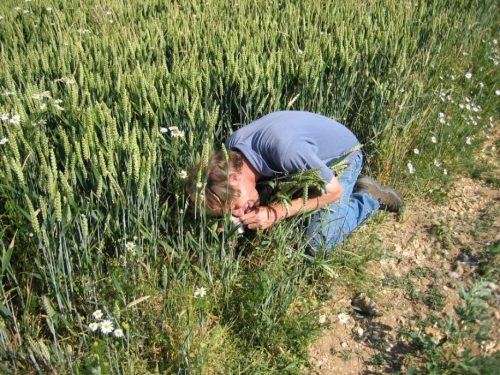Arable flora are a specialist group of plants which have evolved to take advantage of agricultural disturbance. Many factors govern their emergence such as crop rotation, cultivation type, soil conditions, seedbank age and competition – these all make arable flora challenging to monitor consistently over time. However, the discovery of important arable plant areas makes a great ‘before and after’ story for your cluster, and you can put in management for them that should lead to increase in numbers over time.
Botanical charity Plantlife has a list of survey methods that you can choose from as well as a link to an ID/recording app. The simplest is to conduct a scored ‘inventory’ on fields of your choice, but there is also a survey method that uses positive and negative indicator species, and a technique for surveying a single species.
Where to look
- Old fields (ideally a century of cultivation)
- Field edges
- Areas of sloping thinner soil
- Field corners
- Around telegraph poles
- Wild bird seed mixes
- Cultivated plots (for arable flora or waders)
- Conservation headlands
- Low-input spring cereal
If you wish to monitor changes over time, a systematic sampling regime must be in place. This means that suitable locations need to be identified before the survey begins, the seasonality and frequency of visits decided in advance, and then observations made repeatedly from all locations in accordance with the predetermined sampling regime.
Identifying arable flowers © Ian Denholm/BSBI

